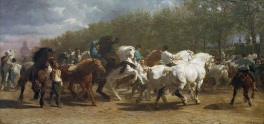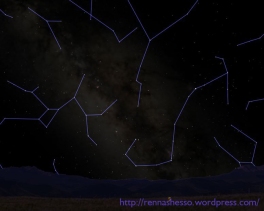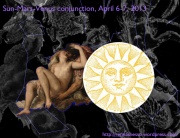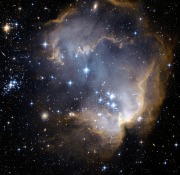
Wow, thought young-teenager-me, a woman artist! The only ones I’d ever heard of were Georgia O’Keeffe and Grandma Moses. The name I had found was “Joan Miró.”
Oops. I quickly realized that Joan is a variation on Juan. I felt like crying.
This was during the early 1960s, before the rediscovery of so many female artists during the 1970s, ’80s and ’90s, a resurrection largely driven by the women’s movement. Like an archeological dig into history, there were all these amazing women artists hidden just out of sight, apparently ignored during their own lives and then further forgotten by time. That reclamation is often called herstory.
But guess what? Many of those artists were known, even respected and successful, in their own time. Here’s a tiny list of a few:
I’ve seen popular books on art history from the late 1800s that mention many of these artists. Most weren’t been buried very deeply at all until the mid-1900s.
So what the heck happened?
H. W. Janson happened, known to generations of college and university art students as the Janson who wrote History of Art, which first appeared in 1962 and remained the standard art history text for decades.
The number of women artists Janson included? Zero.
This wasn’t an accident. Like Jane Austen’s Mister Darcy describing the rarity of “really accomplished” women, Janson said: “I have not been able to find a woman artist who clearly belongs in a one-volume history of art.” A revised Janson edition in 1986 finally included some women artists: By then, the wealth of research made it impossible to entirely exclude them. (You can find some references listed at the bottom of Wikipedia’s “Women artists” page, and see more images reaching much farther back in time at Suppressed Histories Archives.)
Art, and the absence and eventual re-emergence of women artists, is part of my background and studies, and more viscerally, part of my coming-of-age DNA. I’ve never forgotten this particular gender issue – the lie – but it no longer keeps me awake at night.
Fast forward, from art to shamanism, and Mircea Eliade. He was the author of Shamanism: Archaic Techniques of Ecstasy, (France 1951; in English 1964) an extremely influential popular text on shamanism. Having slogged through Techniques of Ecstasy myself a couple of times, I’d noticed the near-absence of women. I assumed ignorance or worse. It was worse…
Enter Barbara Tedlock’s excellent book, The Shaman in the Woman’s Body. While Tedlock’s focus is on the many powerful women working in shamanism in the world, today and throughout history, she does mention their relative scarcity in recent texts on historical shamanism. In fact, there’s so little mention of women in Eliade and most post-Eliade texts that I’ve had discussions with people – they’ve tended to be male people – who feel they can state for a fact that most shamans are male.
Yet, according to Tedlock, “[Mircea Eliade] never met a living shaman and thus had to depend on published sources.” That’s our expert? Bad enough, but far worse: Contrary to his own source material, Eliade “went out of his way to deny shamanic status to women.” The women that Eliade did mention were generally misidentified as “sorceresses,” or “possessed” or as being engaged in evil or just plain ineffectual practices. 1
And that wasn’t true. From Tedlock again:
One of the authors [Eliade] cited was Jan Jacob Marie de Groot. But de Groot, perhaps the most authoritative source on ancient Chinese religion at the time, had actually noted that women shamans predominated in early Chinese shamanism and that they were considered great healers… [Eliade’s] erasure of women from important religious roles was not even remarked upon for forty years. 2
Sure enough, working off Eliade and subsequent writers who use him as a primary source, many people come away with the erroneous impression that women practitioners are rare in shamanism. And that isn’t true. But Eliade’s prejudices have become a perpetuated lie.
Tedlock’s terrific book – another reclamation – mentions Eliade and “the disappearing act” as just one facet of her rich research. Her focus is on the amazing work that shamanic women have always done and continue to do.
Janson’s and Eliade’s: Have either of these particular old lies impacted your own work? While I love setting my own course, I’ve found that I like knowing that someone has gone before and “broken a trail,” made a path that I can perhaps follow, or at least know that someone else made an attempt. Although art and shamanism both are so inherently idealistic and alive and lit with passion, art can also be isolating, and so can shamanism. Obscuring a trail is a low-minded, sneaky deed. Done like this, it cuts away chances for inspiration and continuity and community.

I’m thinking of all this today because of Pamela Colman Smith, arguably one of the most influential artists in the world. And relatively unknown. She’s the artist behind the 1909 “Rider-Waite” tarot deck. Her work was shown in New York by Alfred Stieglitz at his gallery 291, years before he crossed paths with Georgia O’Keeffe.
Tarot people know Pamela Colman Smith, but she is still nearly unknown outside the realm of tarot. The tarot images she created have inspired dozens – probably hundreds – of other decks, and every day around the world, thousands of people look at her art, or derivations of it, as they have their tarot cards read. Influential and unknown.
For every trail we forge going forward, chances are there are multiple paths tracing back to earlier roots that can help inspire the way.
We’ve got to keep brushing away all the damn dust.
______________
1 Tedlock, Barbara, Ph.D. The Woman in the Shaman’s Body: Reclaiming the Feminine in Religion and Medicine. New York: Bantam Books, 2005, pages 63-64.
2 Tedlock, pg. 64.







